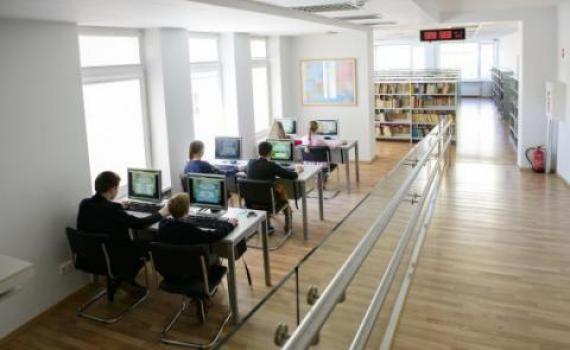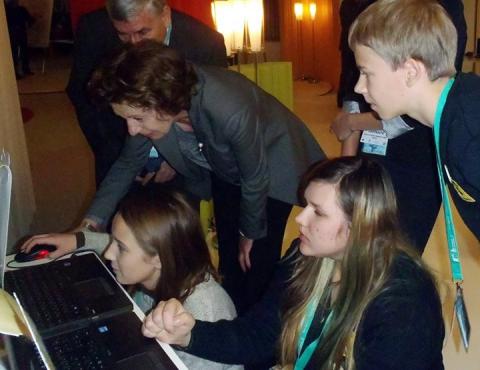
Community need
Concerned about the numbers of children who were not attending school, especially those who preferred to come to the library during school hours to play computer games, librarians knew something had to be done. Working with partners including the education agency, Education Development Centre, school teachers and headmasters, and software development experts, they came up with a solution that has achieved remarkable success.
The innovative project
With a grant from the EIFL Public Library Innovation Programme (EIFL-PLIP) in 2010, and in consultation with their partners, the library developed the educational game, Iššūkis (‘Challenge’). The game is animated, and engages children in tasks related to subjects in the school curriculum. At key points, to move forward, players must contact their teachers. Teachers support their pupils, rewarding them with stickers as they progress to higher levels of the game, and adding points won in the game to their school results.
eIFL-PLIP project timeline
May 2010 to April 2011.
Achievements and impact

The game quickly became extremely popular.
Within a few months, it was being offered in 25 town and village libraries, reaching 13 schools and 1,700 children. Teachers reported that at some schools, over 80% of children had registered to play. Teachers also said that pupils’ test results were improving.
Librarians reported that fewer children were coming to the library during school hours, and that in the library, children were better behaved.
Follow the project's progress
-
In October 2012, the Lithuanian Youth Council (LiJOT - lijot.lt/ – the biggest association of youth organizations in the country – named Utena A. and M. Miškiniai public library as their Youth Partner 2012.
-
In March 2013, the library received funding to expand their innovative ‘Play to Study’ service to nine more municipalities, where it reaches over 9,000 children from 58 schools through 113 libraries.
-
In November 2013, the library was selected for showcasing at the ICT 2013: Create, Connect, Grow conference in Vilnius (Lithuania), which brought together almost 5,000 technology experts, researchers and innovators representing governments, business, civil society and academia from across the world. The children had the opportunity to present the project to Neelie Kroes, Vice-President of the European Commission responsible for the Digital Agenda.
-
In 2013, the library's computer game, Iššūkis (‘Challenge’), was named Lithuanian winner of the European Award for the Best Content for Kids 2013 contest.
Additional resources
Read a two-page case study about the project.
MORE libraries supporting education
Read about more innovative public library services supporting education of children and adults. PLIP-EDUCATION





